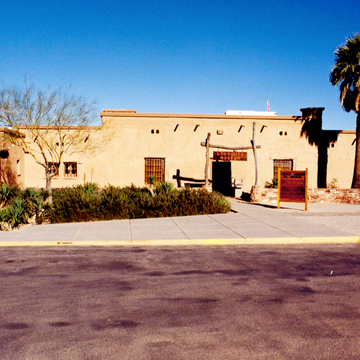The CCC built the one-story museum of handmade, sun-dried adobe brick in the Pueblo
The museum building itself reflects the early twentieth-century interest in Native American art and culture and the popularity of the Pueblo Revival style, whose rounded edges and rough surfaces emphasized the architectural craftsmanship favored in earlier movements such as the Arts and Crafts. The museum is significant not only as an attempt to capture the feeling of the pueblos at the Lost City but also as an excellent example of the style. Unfortunately the museum recently stuccoed over the original adobe brick, drastically altering the building's appearance.

